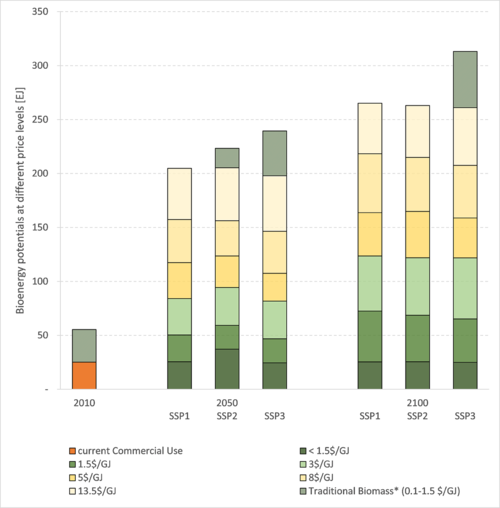Bioenergy - MESSAGE-GLOBIOM
| Corresponding documentation | |
|---|---|
| Previous versions | |
| Model information | |
| Model link | |
| Institution | International Institute for Applied Systems Analysis (IIASA), Austria, http://data.ene.iiasa.ac.at. |
| Solution concept | General equilibrium (closed economy) |
| Solution method | Optimization |
| Anticipation | |
Biomass energy is another potentially important renewable energy resource in the MESSAGE-GLOBIOM model. This includes both commercial and non-commercial use. Commercial refers to the use of bioenergy in, for example, power plants or biofuel refineries, while non-commercial refers to the use of bioenergy for residential heating and cooking, primarily in rural households of today’s developing countries. Bioenergy potentials differ across SSPs as a result of different levels of competition over land for food and fibre, but ultimately only vary to a limited degree (<xr id="fig:MESSAGE-GLOBIOM_beavail"/>). The drivers underlying this competition are different land-use developments in the SSPs, which are determined by agricultural productivity and global demand for food consumption. (Fricko et al., 2016 MSG-GLB_fricko_marker_2016)
Availability of bioenergy is presented in <xr id="fig:MESSAGE-GLOBIOM_beavail"/> at different price levels in the MESSAGE-GLOBIOM model for the three SSPs (Fricko et al., 2016 MSG-GLB_fricko_marker_2016). Typically non-commercial biomass is not traded or sold, however in some cases there is a market – prices range from 0.1-1.5$/GJ (Pachauri et al., 2013 MSG-GLB_pachauri_pathways_2013) ($ equals 2005 USD).
